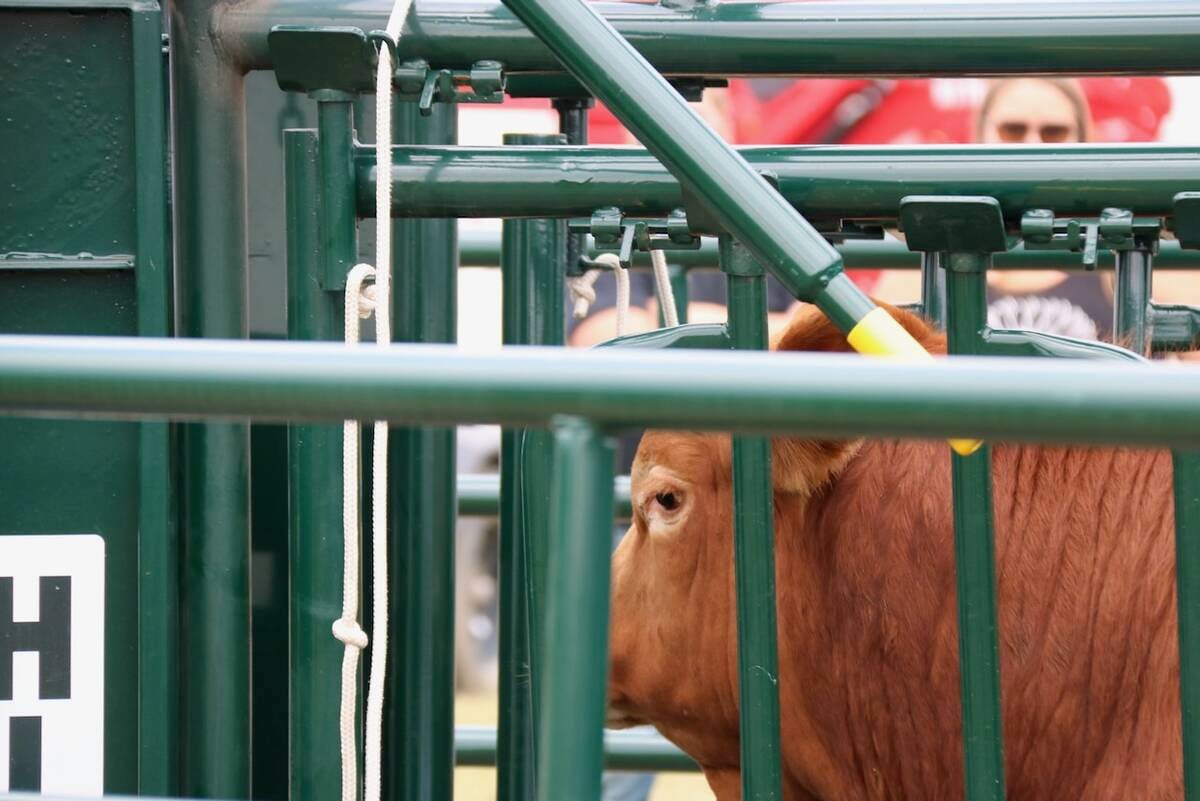Increasing calf survival rates on summer pasture requires a variety of management strategies.
Conditions vary across the country: from vast ranches in British Columbia, where calves may not be seen most of the summer, to more accessible pastures in Alberta and Saskatchewan, where weekly checks are common.
It’s important to know what diseases affect young calves in a particular geographical location.
In Alberta, cattle can be summer pastured hours from where they were calved. Diseases such as clostridium hemolyticum (redwater), anthrax and leptospirosis may be more prevalent in certain locations, and local producers and veterinary clinics will know those diseases and if vaccines are available.
Read Also

Good handling equipment a must on cattle operations
It’s important for the safety of producers and everyone else dealing with their stock that handling equipment is functional and safe.
Vaccination can be the best form of preventive medicine.
The clostridials should be routinely used in all situations, and the make and number that are used will depend upon need and whether producers use them in combination with histophilus.
Vaccination helps prevent the respiratory, heart, joint, and brain form of histophilus.
The other two bacterial respiratory pathogens, Mannheimia and Pasteurella, are also starting to become core vaccinations for calves. They are the two common bacteria that can cause death in young calves at pasture because of respiratory disease.
All of these diseases can often be controlled using only two comprehensive vaccines. This is good news because sick calves are hard to find and hard to catch and treat.
Newer intranasal vaccines have been developed that offer quick protection for calves that develop respiratory disease early before they are processed.
Inforce looks after most of the viral components and Once PMH IN looks after the Mannheimia and Pasteurella bacterial components. They are separate vaccines that can be given at the same time but in different nostrils.
This may be of great help for producers whose calves develop respiratory disease early because the immunity or protection develops quickly and intranasal vaccines cause essentially no stress.
Veterinarians can usually determine cause of death on site, and action can be taken if any of the above mentioned diseases are found, including setting up vaccine programs, metaphylactically treating the rest of the calves with antibiotics or in some cases administering both vaccines and antibiotics.
Some of the macrolide antibiotics last as long as 28 days, which means they can be used to treat respiratory disease and then carry the protection forward.
Autopsies can help producers de-cide what to prescribe and let them know if it is working.
They can also find perforated ulcers or intestinal torsions, which lets farmers know there was nothing they could have done to save the animal.
Bad navel infections may prompt producers to look at their management close to calving.
They should take a comprehensive walk through the cattle at turnout and watch for any changes. A timely treatment with current long acting products may avert a problem.
The same advice applies when producers transport cattle, change pastures or get cows ready for synchronization programs.
This is a great time to observe the calves and may be the last time they can be easily caught and treated before fall roundup. If in doubt, take the calf’s temperature or ask someone’s opinion.
Some producers have started administering non steroidal anti-inflammatory drugs (NSAIDs) to all calves that are castrated at branding to minimize stress. They may actually be warranted on all calves if producers are branding, implanting and transporting. A veterinarian can provide advice and write the prescription or extra label use.
Parasites will reduce gains and challenge a young calf’s immune system. Coccidiosis and internal parasites may need to be controlled, depending on the levels of exposure.
Implant all steer calves and non-replacement heifers, which is as good as any guarantee I know to increase gains and return a 30:1 ratio in returns come fall.
Statistics show that only 30 percent of sucking calves are implanted in Canada. There is room for lots of improvement here, even when replacement heifers are taken into account.
Products are available in pour-on format, ear tags or oilers to control external parasites and flies.
Try to use the pour-on type when the cattle enter summer pasture because it provides the maximum benefit of two months control. It’s often best to do both cows and calves.
Fly tags will last longer and are applied to either the cow or calf. The control provided by these tags in-creases gain, reduces stress from fly biting and irritation and helps control spread of pinkeye and other diseases that flies can carry.
Doing all of this can result in a busy spring, but it’s worth it if fewer calves are lost or become sick. At more than $3 per pound, it doesn’t take much improvement to pay for the extra costs.














